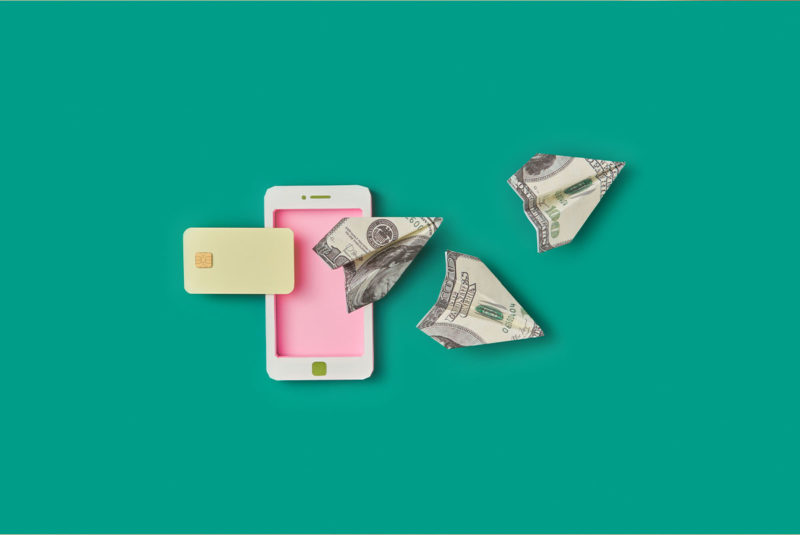If you’re just starting your career, a credit card can be a valuable part of your financial toolbox. You may be thinking along these lines:
- I’m spending a lot of money every month and know I could be getting some rewards. What’s a good, simple cash back card?
- I travel occasionally for work and want to earn points. What travel card should I get?
- I travel very frequently and want a card to earn points and enhance my experience. Does it make sense to pay a high annual fee?
- I don’t have any credit history. What should I get as my first credit card?
- I got myself into some credit card debt during college. How can I reduce the amount of interest I’m paying?
We’ve surveyed the marketplace and here are our top credit card picks to suit your individual needs, whatever they may be.
The Best Credit Cards for Young Adults and Professionals
| Best For | Card |
| Travel | Chase Sapphire Preferred® Card |
| Premium Travel | Chase Sapphire Reserve® |
| Limited Credit History | Journey Student Rewards from Capital One |
| Transferring or Carrying a Balance | U.S. Bank Visa® Platinum Card |
One of these might be a good fit for you, but keep in mind you don’t have to limit yourself to just one credit card. Having several credit cards will give you more spending power and can actually improve your credit scores. You can also come up with a strategy to optimize your spending across multiple cards to maximize rewards. As you build up your credit, you’ll be able to qualify for better cards. Let’s take a closer look at each of these cards.
Best for travel
The Chase Sapphire Preferred® Card is one of the most popular general travel credit cards. It’s loved for its redemption bonus and point transfer options and for the host of attractive benefits it provides.
Ultimate Rewards points are usually worth 1 cent each, but the Sapphire Preferred adds a 25% bonus when you redeem for travel expenses. That will give you a cash back equivalent of 2.5% for travel and dining, with 1.25% for every other purchase. Your intro bonus points will be worth a lot more too.
You can also transfer your points to 13 different airline and hotel loyalty programs at a 1:1 rate. This could give you a better value per point, upwards of 2 cents each. At that rate you’d be getting a 4% cash back equivalent for travel and dining, with 2% back for everything else.
Runners-up
- Capital One VentureOne Rewards Credit Card
- Bank of America® Premium Rewards® Credit Card
Best for Premium Travel
The Chase Sapphire Reserve® is the upgraded version of the Sapphire Preferred above, but with better earning/redemption rates and luxury travel benefits.
It has a fairly high annual fee of $550, but the perks offered will offset this cost. When considering expensive cards like these, take some time to be sure you’ll be getting a positive expected value for the fee.
The Sapphire Reserve earns Ultimate Rewards points, like the Sapphire Preferred. But in this case you’ll be earning 10X Ultimate Rewards points per dollar on Lyft rides, 3X points on travel and dining, with a 50% point bonus when redeeming for travel through Ultimate Rewards.
That means you’d be getting a 4.5% cash back equivalent for travel and dining, with 1.5% back for everything else. If you transfer those points to an airline or hotel program and get 2 cents per point, for instance, you’d be earning cash back equivalents of 6% in the first case and 2% in the second.
Runners-up
- The Platinum Card® from American Express
- U.S. Bank Altitude® Reserve Visa Infinite® Card
Best for limited credit history
If you’re just beginning your credit journey, you’re probably looking for a good first step to get you going.
The Journey Student Rewards from Capital One is a good first credit card and it doesn’t actually require you to be a student, despite the name. Unlike most card offers made for limited credit, this one actually provides a bit of cash back.
It’s a very simple rewards program. Pay on time to get a 25% bonus on your 1% cash back. But paying on time should be a given – it’s an important habit to establish and follow whether you get a bonus or not. Payment history is one of the biggest factors in your credit scores and late payments will bring your scores down significantly.
After using cards like this one responsibly for some time and building up your credit, you’ll be able to qualify for more valuable rewards cards, including the premium travel cards in this post.
Runner-up
- Petal® 1 “No Annual Fee” Visa® Card
Best for Transferring or Carrying a Balance
The U.S. Bank Visa® Platinum Card excels at balance transfers.
Why? It has an exceptionally long 0% APR balance transfer offer, giving you more time than most other credit cards.
If you’re already dealing with credit card debt, making a balance transfer to a 0% card like this will give you time to pay it off at no interest.
Is a New Credit Card Right for You?
When you visit MoneyTips, we want you to know that you can trust what’s in front of you. We are an authoritative source of accurate and relevant financial guidance. When MoneyTips content contains a link to partner or sponsor affiliated content, we’ll clearly indicate where that happens. Any opinions, analyses, reviews or recommendations expressed in our content are of the author alone, and have not been reviewed, approved or otherwise endorsed by the advertiser.
We make every effort to provide up-to-date information; however, we do not guarantee the accuracy of the information presented. Consumers should verify terms and conditions with the institution providing the products. Some articles may contain sponsored content, content about affiliated entities or content about clients in the network. While reasonable efforts are made to maintain accurate information, the information is presented without warranty.
Getting a new credit card can be a bit intimidating, especially if you’re going to be a first time cardholder. Applying for new cards is simple, but if you’ve never done it before the credit card application process can be intimidating. You may want to learn a bit first.
As a young adult, you may or may not have established a credit history. Even if you’ve never had a credit card before, student loans, auto loans and personal loans will all contribute to your credit profile because they’re reported to the three major credit bureaus. So a good first step is to check your credit reports and scores to see where you stand.
If you have good credit already, that’s great! That means you’ll meet the standard for most credit cards. Factors like income and monthly rent payments also play a role in your overall creditworthiness — so approval is definitely not guaranteed just because you have good credit.
If you haven’t started building credit yet or you have poor credit scores, you’ll still have quite a few credit card options. Some cards are designed for people with limited or no credit, while others are designed for people with bad credit.
Whatever your credit scores might be, you should check to see if you’re pre-qualified for any credit card offers before applying. This can give you an idea of the types of cards you’ll be approved for. You may even find a private offer featuring a better-than-usual signup bonus.
Maybe you already have a credit card or two and you’re concerned, opening more cards will hurt your credit. But not to worry: As long as you use your cards responsibly, having multiple credit cards won’t have an overall negative impact on your credit. In fact, it will generally have a positive effect because you’ll be lowering your credit utilization, a measure of how much of your total credit limits you’re using. Lower utilization is better for your credit scores.
No matter what type of card you get or how many you have, be sure to keep up the good credit behavior. So, up front, understand the terms and always pay your bills on time. We recommend paying the statement balance in full each billing period, which will let you completely avoid interest on purchases. It’s good for your credit utilization too.
Treat your credit cards a bit like debit cards to help you stay on track — pay them off every month and never carry a balance. Once you start accruing interest on a credit card, it’s easy for that balance to spiral out of control.



